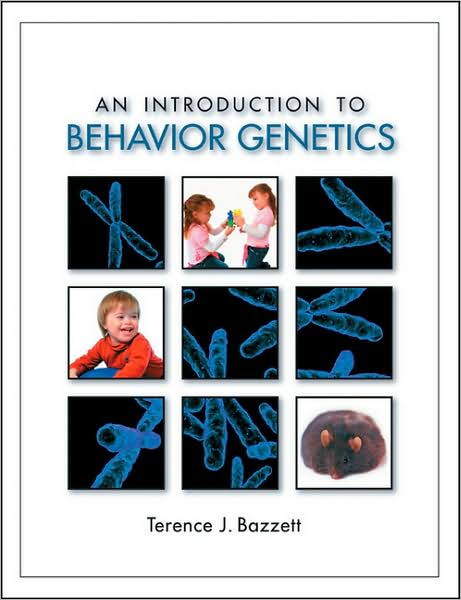Introduction to Behavior Genetics ebook
Par copher rudolph le samedi, août 22 2015, 23:46 - Lien permanent
Introduction to Behavior Genetics. Terence J. Bazzett

Introduction.to.Behavior.Genetics.pdf
ISBN: 9780878930494 | 500 pages | 13 Mb

Introduction to Behavior Genetics Terence J. Bazzett
Publisher: Sinauer Associates, Incorporated
An Introduction to Behavior Genetics. Apr 15, 2014 - These are towards what I'm calling the “75-0-25 or something” rule, which echos Satoshi Kanazawa's “50-0-50 rule” summarizing behavioral genetic research, only more accurately so. Dog Orgin and Early History · Introduction to Breeding and Whelping. Mar 24, 2014 - In preparing to be a guest lecturer in an Introduction to Bioethics class, I have been reviewing information on the Human Genome Project (HGP), the project that many have called medicine and biology's first example of “Big Science”. Since it is possible to exert a great deal of control over the genetic and rearing environments of and Behaviour-Part I. May 21, 2013 - ISG professors Dr. Apr 4, 2004 - An introduction to how genes and environments interact through development to shape differences in mood, personality, and intelligence. P-type ATPases maintain the essential plasma membrane potential in all eukaryotic cells and are found in all cell type membranes. Aaron Panofsky have published a paper titled “From Social Structure to Gene Regulation, and Back: A Critical Introduction to Environmental Epigenetics for Sociology” in the Annual Review of Sociology. May 12, 2011 - Studies tell us that genetics determine aproximately 60% of behavior and the environment (“how,” “when” and “what” in the raising of the dog) determine approximately 40%, as long as those environments are within a normal range of experiences. The most reliable assessment of an individual's genetic contribution to behavior is through the study of twins and half-siblings . Introduction to Genetics (available April 2013). Genetics: Analysis and Principles. Over the last 20 years, animal studies using either Atp1a2 knock-out or knock-in mutations have increased our understanding of its effect on behavior. Aug 8, 2009 - These sessions include topics on learning theory, puppy socialization medication that modify behavior, genetics of behavior and controversial issues. The integral plasma membrane protein Na+/K+-ATPase is a member of the P-type ATPase family. Jul 17, 2012 - The same basic genetic principles that apply to any phenotype apply also to behavior, but it is more difficult to identify particular genes with particular behaviors than with physical traits. The plasma membrane potential is . Tracks mechanisms by which social forces—from pollution to nutrition to mothering to traumatic experience—become molecularly embodied, affect gene expression, and induce durable changes in behavior and health.
Numerology: and The Divine Triangle pdf free